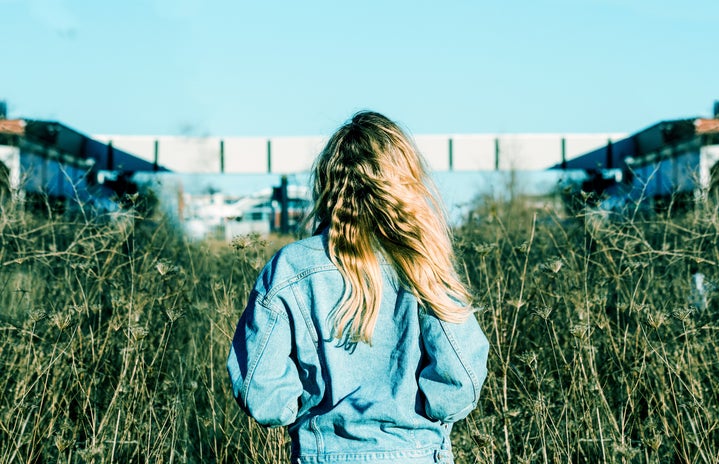A long, long time ago, in a far away land, a woman found out the secret formula to make the hair of every girl, the most beautiful and shiny of all… Well, not that long ago and not so far away…
What I am talking about is the “no poo” and “low poo” techniques, developed from the “Curly Girl Method” created by the British hairdresser Lorraine Massey in her book Curly Girl. After lots of years working with curly haired women, she found out that some components found in most cosmetics and some techniques used by most people don’t really take care or hydrate the hair the way it should, especially the curly ones.
What exactly these techniques mean?
In her book, Loraine starts with the principle that curly hair is drier than other types of hair, so it needs more hydration. However, most part of shampoos in the market have substances with sulfate, a component that acts like a strong detergent, cleaning not only the dirt of the hair, but also the natural oils of it, leaving the hair even more dry.
But why do they use the sulfates?
Cosmetics companies use the sulfate in the shampoo because it’s the only component that can take of the insoluble silicones, mineral oils, paraffin and petrolatum that they use in the conditioners. Lorraine also says that those components used in the conditioners don’t really hydrate the hair, they only act on the superficial part of the hair strands and create a cape around it, almost like a makeup, pretending that the hair is hydrated and shiny, but in the inside, it isn’t.
The “no poo” and “low poo” techniques defend the cut off or the reduction of these components in the everyday care of the hair.
What are the differences between “no poo” and “low poo”?
Who follows the “no poo” technique don’t use any of the components mentioned before (no sulfates, no paraffin and no silicones). To wash the hair the co-wash comes along, which is the simple fact of cleaning the hair with the conditioner. Remembering that the conditioner can’t have any of those components.
Giulia Palermo, freshman in journalism, does “no poo” and said that, despite not having reached 100% of the result that she wanted yet, she’s very satisfied with the technique. “I ended up doing a month of low and went to a saloon specialized in curly hair. When I got there, I talked to the hairdresser and she said that the most indicated for me was ‘no poo’, because it hydrates more and take better care of the hair strands. Now I’m already doing ‘no poo’ for two months and I’m loving the results.”
Giulia’s before and after
Who goes with the “low poo” technique can use the silicones, shampoos with very little sulfate on or no sulfate at all. But all the other components are out of the question.
Beatriz Fialho, also freshman in journalism, says that most difficult part in the beginning was understanding what products she could and couldn’t use, but once she got the hang of it she felt the difference right away and haven’t thought about stopping it. “I was hating my hair after a haircut and thought about straight it up. A friend commented about a different technique and I decided to research about it. After one month browsing I decided to start, so I went to the drug store and bought a lot of cheap products to test. After that it was only joy and moments of lots of love for my hair.”
Beatriz’s before and after
In addition to the products, other important point of using the technique is the haircut. “My hairdresser said that the curly hair needs to have layers and lightness so it can be settled. Even the wavy hair can have a lot of movement with a peaked haircut. When it comes to straighter hair it doesn’t make a lot of difference, the hair shape do not influence in the result of the technique”, says Beatriz.
However, is not because you have straight hair that you can’t use the techniques as well. That’s the case of Carol Comoli, former student of PP. “I started doing ‘low poo’ when I got to know the ‘Morena raiz blog’ channel. I saw that the focus was for curly hair and I realized that, despite my hair not being curly, the tips and care would be good for my hair as well.”
When starting the techniques some struggles can be found. In Carol’s case, one of the most difficult things was to find the right products at reasonable prices. “I started the “low poo” in December of 2015, and it was before the boom of specific products. There were a lot of products, but it wasn’t well distinguished from the rest in the packaging.” She also complements that she did spent more money that she used to. “With the chronogram, I ended up buying specific products for hydration, nutrition, reconstruction and everything else.
However, when asked about it, Giulia, said that it doesn’t change much. “The matter of prices is really relative. There are very expensive products, many are worth, because they give a good result. But there are also lots of cheap products in the market that we don’t even imagine that are released for ‘no’ and ‘low poo’”.
Another struggle can be to find the right product for your hair. “I think the hardest part is to find the product that adapts better in the hair, because, sometimes, what goes better in one hair do not work for other”, reports Giulia. “The important thing is the person to know their hair and realize if it needs nutrition or reconstruction”, says Beatriz about the specific products for hair chronogram.
But in the end, once you get the hang of it, all struggles are rewarded with a good result and a better looking hair.


